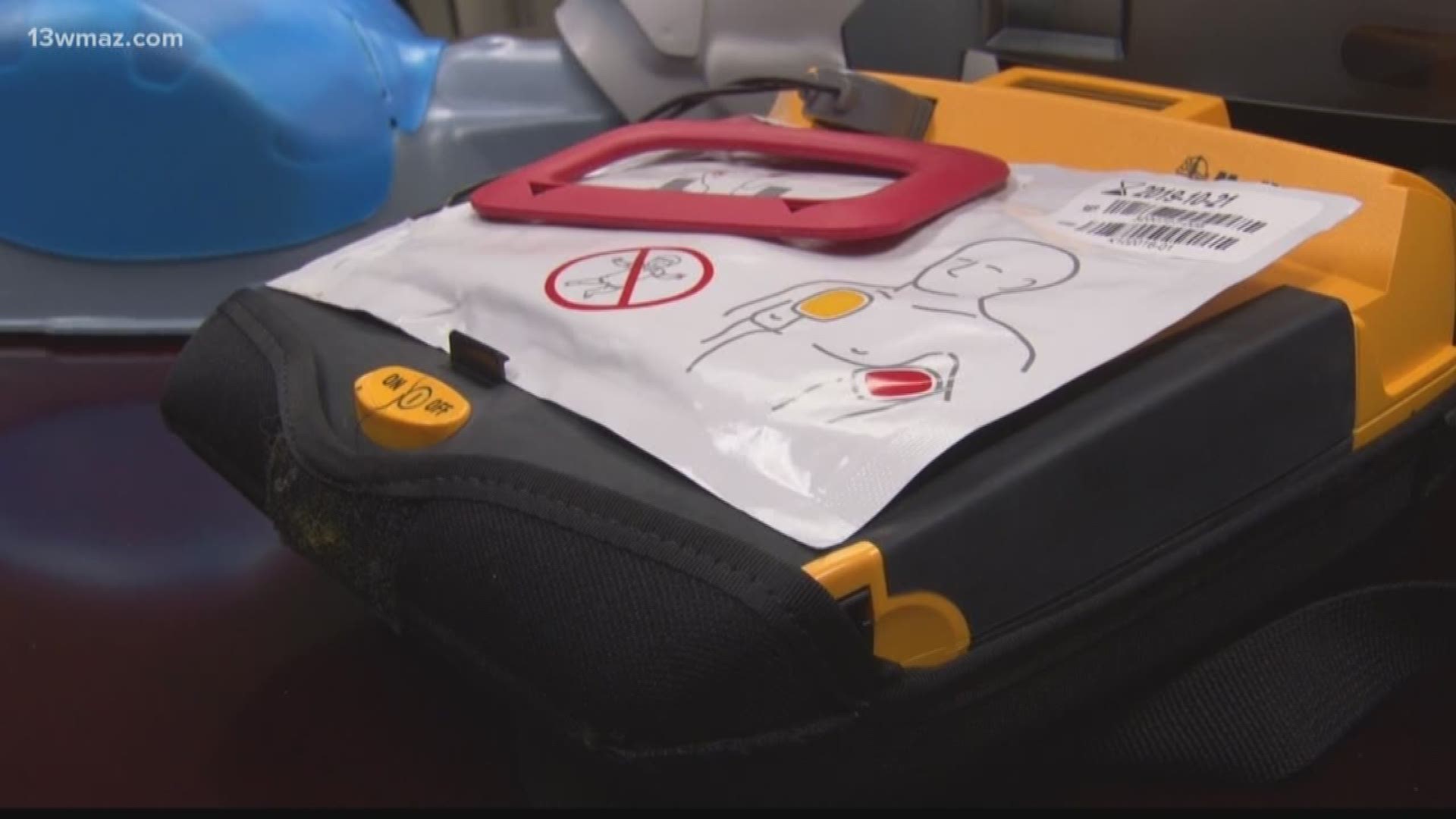At some Georgia high schools, if a student-athlete needs CPR, there wouldn't be anyone around certified to help. The American Heart Association estimates less than 10 percent of students in that situation would survive.
"Brain death can start to occur within four to six minutes of the brain being denied oxygen," said Bibb Schools' director of risk management, David Gowan.
Gowan is a certified CPR instructor and teaches monthly classes to employees in his district, including every coach.
Other districts, like Bleckley and Monroe County, also require coaches to go through CPR and AED training.
In Houston County, the training is not required by the district, but encouraged by each school. Spokesperson Beth McLaughlin says each high school also has a certified athletic trainer at practices and games.
It's a much different story at Crawford County High School, where coaches and employees are not required to take any first aid courses and there is no certified athletic trainer.
"We could lose somebody and I just couldn't live with that," said soccer and softball coach Holly Johnson. "This summer, we were playing ACE Academy and a girl, after the game, started having seizures."
Johnson says she felt helpless. She was not trained to help, and she says in a rural area, it can take longer for emergency crews to get there.
"Thank goodness there were some parents there that were nurses and were trained and could help us," she said. "If not, who knows what would have happened?"
The situation prompted Johnson to enroll in a CPR class and get certified on her own.
"As a head coach responsible for these young ladies," she said, "it's a lot of responsibility."
In April, the Georgia High School Association approved a rule change requiring all coaches to go through CPR and AED training before their season begins next school year.
"It's about saving lives," said GHSA Executive Director Robin Hines.
That training, however, does cost money.
"We don't have a lot of extra money laying around and we have 18 coaches," said Crawford High School Principal Ed Mashburn. He says it will cost the school roughly $1,500 to $1,800 to certify all of their coaches.
The American Red Cross says it does cost roughly $70 to $80 per person to have one of their instructors come teach a course.
Mashburn says it's a price worth paying for the safety of their students. He's already scheduled a training session for May.
In Bibb County, Gowan is already a certified instructor and teaches monthly courses to employees. According to the American Red Cross, that system can cost close to $5 per person.
Hines says the GHSA is working to help more districts set up a program like Bibb's.
"We are working with people so that it can be done at no cost to the systems," he says.
Hines says those details have not been ironed out yet.
After the initial training, coaches will need to get re-certified every two years. If they do not, they will get fined by the GHSA.
------
Cardiopulmonary resuscitation (CPR) can help save a life during a cardiac or breathing emergency. However, even after training, remembering the CPR steps and administering them correctly can be a challenge. In order to help you help someone in need, we've created this simple step-by-step guide that you can print up and place on your refrigerator, in your car, in your bag or at your desk.
Before Giving CPR
1. Check the scene and the person. Make sure the scene is safe, then tap the person on the shoulder and shout "Are you OK?" to ensure that the person needs help.
2. Call 911 for assistance. If it's evident that the person needs help, call (or ask a bystander to call) 911, then send someone to get an AED. (If an AED is unavailable, or a there is no bystander to access it, stay with the victim, call 911 and begin administering assistance.)
3. Open the airway. With the person lying on his or her back, tilt the head back slightly to lift the chin.
4. Check for breathing. Listen carefully, for no more than 10 seconds, for sounds of breathing. (Occasional gasping sounds do not equate to breathing.) If there is no breathing begin CPR.
Red Cross CPR Steps
1. Push hard, push fast. Place your hands, one on top of the other, in the middle of the chest. Use your body weight to help you administer compressions that are at least 2 inches deep and delivered at a rate of at least 100 compressions per minute.
2. Deliver rescue breaths. With the person's head tilted back slightly and the chin lifted, pinch the nose shut and place your mouth over the person's mouth to make a complete seal. Blow into the person's mouth to make the chest rise. Deliver two rescue breaths, then continue compressions.
Note: If the chest does not rise with the initial rescue breath, re-tilt the head before delivering the second breath. If the chest doesn't rise with the second breath, the person may be choking. After each subsequent set of 30 chest compressions, and before attempting breaths, look for an object and, if seen, remove it.
3. Continue CPR steps. Keep performing cycles of chest compressions and breathing until the person exhibits signs of life, such as breathing, an AED becomes available, or EMS or a trained medical responder arrives on scene.
Note: End the cycles if the scene becomes unsafe or you cannot continue performing CPR due to exhaustion.

